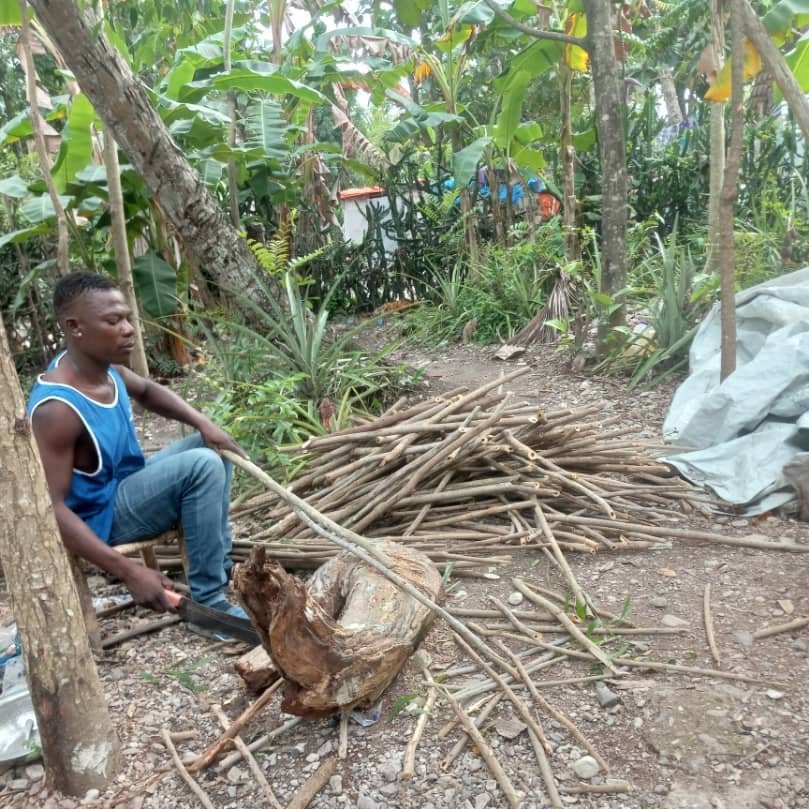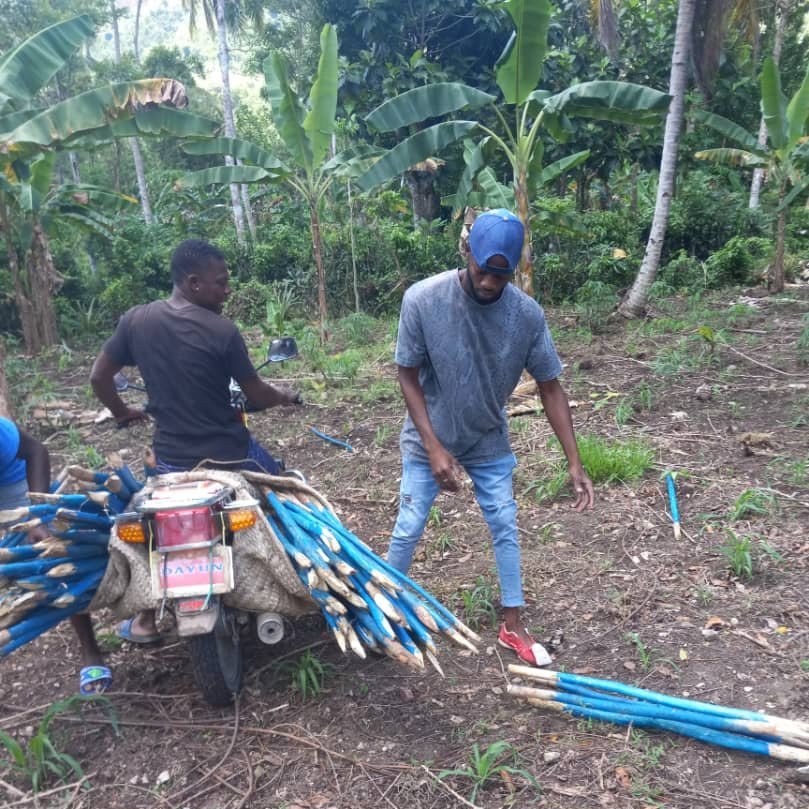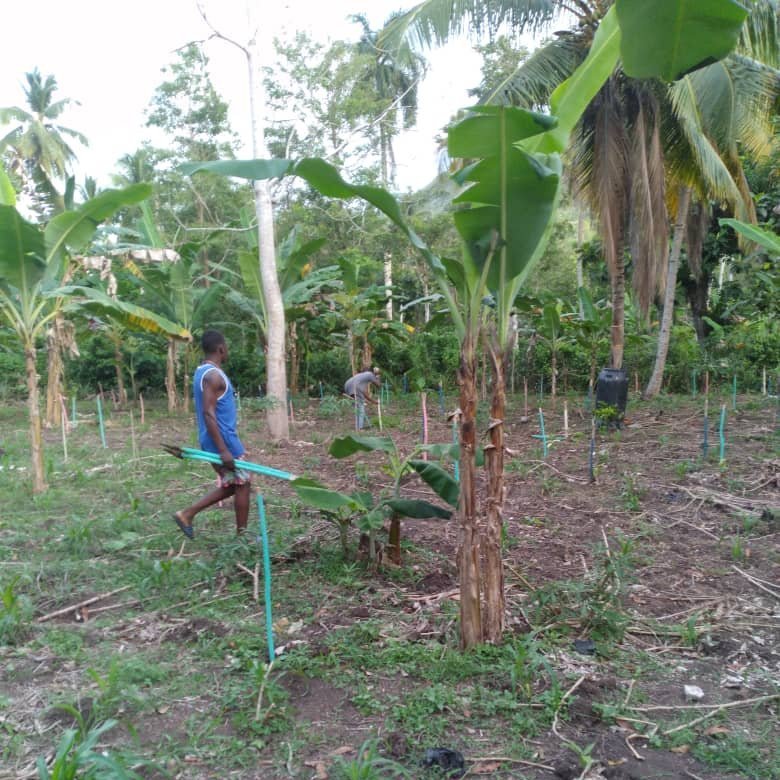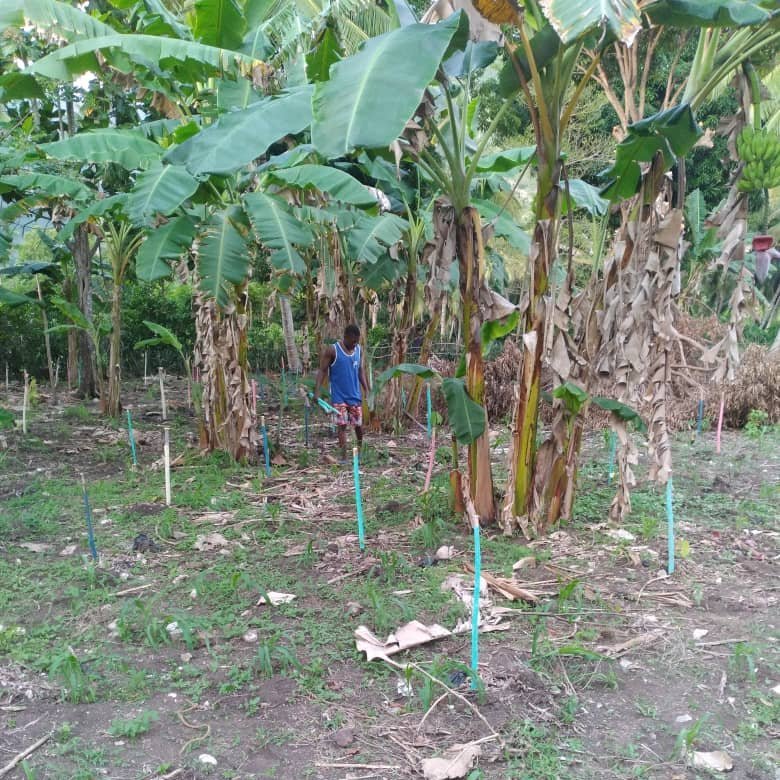On a nearby mountain are Acacia trees. Although they are considered invasive, they’re actually valuable because they grow fast and make great fuel for cooking. The Acacia tree also essentially becomes a placeholder and is prioritized for use, allowing other trees that offer fruits and crops to stay alive and avoid being cut down. Acacia trees also make great stakes for marking and supporting newly planted seedlings.
We cut these branches and turned them into 3 feet long stakes. Then our team painted them different colors so we could differentiate between each tree. Each of these colored stakes is being planted next to a new seedling of cacao, breadnut, or kenep fruit. We’re planting nearly 400 trees on Tisonson's land, and the colored stakes will allow us to track and prove tree survival. In combination with the stake color, the tree's size and species will provide enough data to improve the location services of our tree tracking service. Now we can determine each tree's growth over time along with its carn absorption data.
